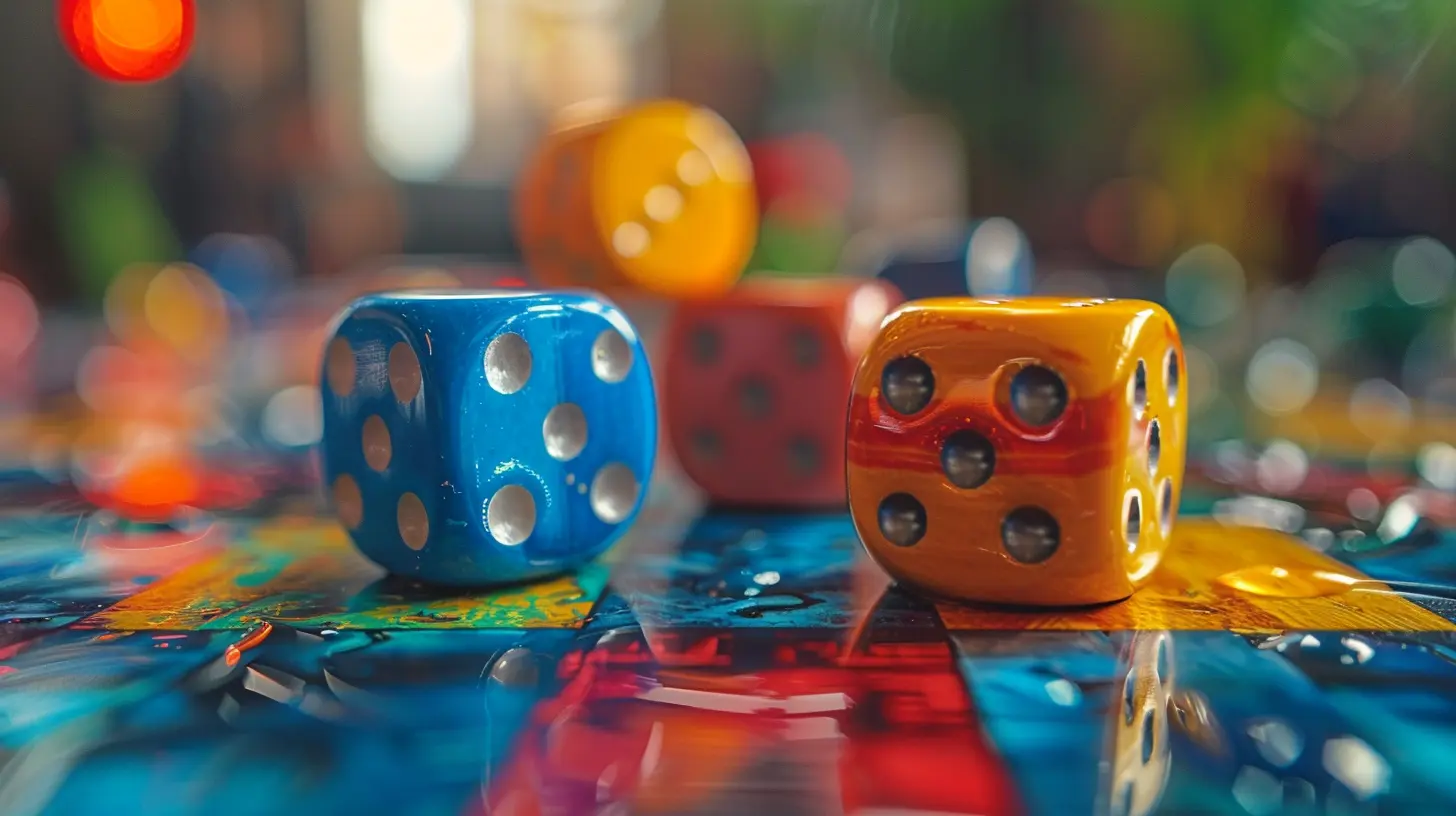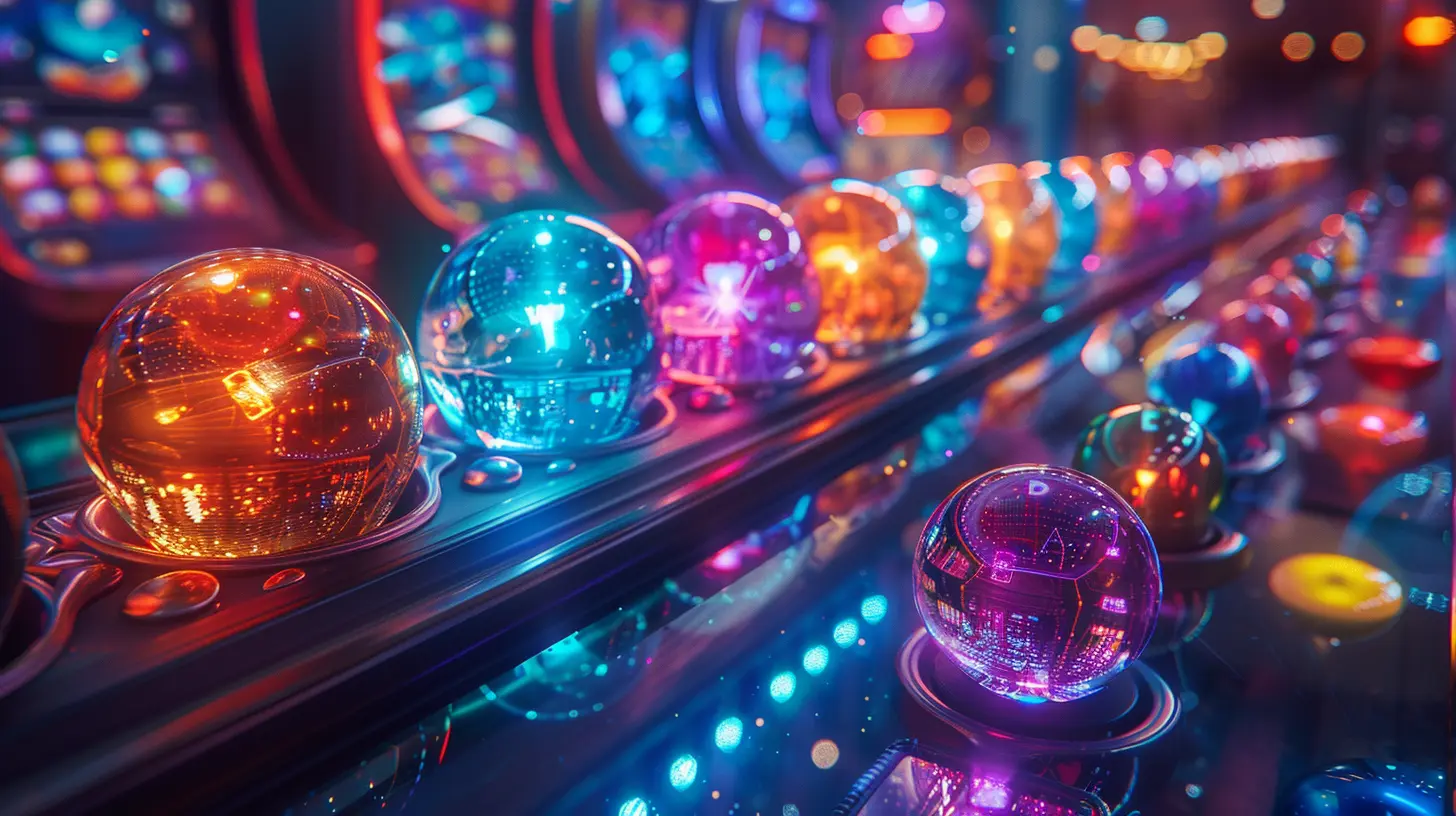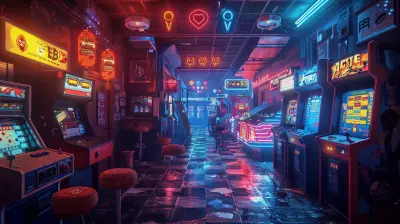The Science Behind Why We Love Match-Three Games
2 November 2025
Let’s be honest — match-three games are like potato chips. You tell yourself you’ll play just one level, and the next thing you know, an hour has flown by, your coffee is cold, and you've been crushing candy like it’s your job. Sound familiar?
Whether it's Candy Crush, Bejeweled, Homescapes, or one of the dozens of clones and spin-offs out there, match-three games have a way of getting under our skin. But why? What is it about grouping three shiny objects together that pulls us in and doesn’t let go?
Let’s dig into the psychology, neuroscience, and game design principles that explain our weird (but kind of wonderful) obsession with match-three games.
What Are Match-Three Games, Anyway?
Before we geek out on the science, let’s set the stage.A match-three game is any game where your main objective involves matching at least three identical items — be it gems, candies, fruits, or tiles — in a row or column to clear them from a game board. New pieces fall in to replace the ones you cleared, potentially causing chain reactions. Simple, right?
But don’t let the simplicity fool you. There’s a lot going on under the hood.
The Appeal of Simplicity
One of the biggest reasons we fall in love with match-three games is that they’re incredibly easy to learn. You don’t need a tutorial that’s 10 minutes long. In fact, some games just throw you in and let you figure it out — and somehow, that just works.No Controller? No Problem.
You don’t need to be a hardcore gamer to enjoy them. You don’t need lightning-fast reflexes, an expensive setup, or even Wi-Fi (shoutout to offline play). You just need your phone and a few minutes to spare.The Rules Are Clear
The rules in match-three games are predictable. Match three of the same shape or color, and they disappear. Match four or five? Congrats, you’ve created a power-up. That immediate feedback makes you feel smart — like your brain just did a gymnastics trick and stuck the landing.
Dopamine: The Happy Hormone Hook
Let’s talk brain chemistry for a second.When you successfully complete a level or make a satisfying combo, your brain rewards you with a hit of dopamine — the feel-good chemical. It’s the same stuff that gets released when you eat chocolate, receive a compliment, or find money in your old jeans.
Micro-Rewards Add Up
Every time you hear that satisfying ding! and watch a bunch of tiles explode or disappear in a flash of color, your brain goes, “Yes, that was awesome. More, please.” Over time, this creates a reward loop that keeps pulling you back in — even if you didn’t plan on playing for that long.
The Satisfaction of Order in Chaos
Ever feel like life is just a nonstop spiral of chaos and unpredictability? Yeah, same. Match-three games counter that by offering structure and control.Puzzle Solving Is Therapeutic
When you clear a board or solve a tricky level, it gives you a quick win. Life might be messy, but at least you’ve got this colorful grid all figured out. It's like making your bed in the morning—it doesn’t solve all your problems, but it’s a tiny victory that feels good.Randomness + Control = Magic
Here’s where things get interesting.Match-three games strike a delicate balance between randomness and player control. The tiles fall in a random order, but it’s up to you to decide where and when to make your moves.
You're Always "This Close" to Winning
Game designers are sneaky-smart. They design levels that make you feel like you're always just one move away from an epic combo or clearing the board. This “almost there!” feeling is intentional — and totally addictive. You keep playing because the next level might finally be the one you conquer.Infinite Replayability
Most match-three games have hundreds, if not thousands, of levels. Some of them introduce new mechanics over time — locked tiles, bombs, colorful blockers, you name it — to keep things fresh.Variety Keeps Us Hooked
The human brain loves novelty but also craves routine. Match-three games deliver both by giving us the same basic gameplay wrapped in new wrappers. It’s like eating your favorite snack, but with a new flavor twist every time.Progress Feels Personal
Remember when you unlocked that particularly tough level after trying for days? That sense of achievement gets stored in your mental trophy case.You're Not Just Playing – You're Achieving
Match-three games are goal-oriented. Whether it’s collecting 50 cherries or clearing 32 jelly tiles in 20 moves, there’s always something to strive for. And those tiny progress markers — stars, badges, or level numbers — make you feel like you're building something, step by step.Social Elements = Friendly Competition
You know that little leaderboard in Candy Crush that shows your friends' progress? Or the option to send lives to your buddy who’s stuck on level 73?We All Want Bragging Rights
Humans are social creatures. Seeing your friend two levels ahead lights a competitive fire under you. Suddenly, you’re not just playing for fun — you’re playing to win. Even if "winning" just means passing your cousin who’s been bragging a little too much.Mobile-First And Time-Killer Supreme
You can play match-three games anytime, anywhere — on the bus, while waiting in line, or hiding from awkward conversations at family gatherings. They’re the perfect time filler.Bite-Sized Gaming at Its Best
Each round is short, typically under three minutes. That’s super appealing in a world where attention spans are shrinking faster than ice cream in the sun. Match-three games respect your time — or at least make it feel like they do.Visual and Auditory Satisfaction
Ever slide three jewels into place and hear that crystal ping followed by a satisfying explosion of light and color? That’s not by accident.Sensory Feedback Is a Big Deal
Game designers use eye-catching visuals, satisfying sounds, and well-timed animations to reward your brain on multiple levels. It’s kind of like ASMR for your eyes and ears.Monetization Without Pressure
One big reason match-three games have remained so popular? Most of them are free.Play for Free, Pay If You Want
Yes, you can buy power-ups or extra lives. But you don’t have to. That’s the beauty of the freemium model — you can commit as much (or as little) as you like. And from a psychological standpoint, that lack of pressure makes us more likely to stick around.Nostalgia and Familiarity
Let’s not forget the emotional factor.For many of us, match-three games were some of the first mobile games we ever played. They carry a sense of nostalgia that feels comfy — like slipping into your favorite hoodie.
Familiar Patterns Are Mentally Comforting
When life gets unpredictable, reaching for a game with a predictable pattern and familiar gameplay can feel like a mental hug. It centers you. Grounds you. Reminds you that some things still make sense.Match-Three Games and Cognitive Benefits
Okay, confession time: playing match-three games might actually be good for you. No, seriously.Mental Gymnastics in Disguise
While they’re not exactly brain-training apps, match-three games do sharpen certain cognitive skills — like pattern recognition, spatial awareness, and strategic planning. The more complex the level, the more you have to think a few steps ahead — just like playing chess but with more glitter.Final Thoughts: It’s Not Just a Game, It’s a Feeling
At the end of the day, match-three games work because they feel good. They scratch multiple itches at once — mental, emotional, and sensory.They offer a break from reality without asking too much from us. They’re always there when we need them. Whether you play for five minutes or fifty, there’s no judgment — just fun, simplicity, and a splash of color.
So next time you find yourself on level 623 of your favorite match-three game, remember: it’s not just a guilty pleasure. There’s real science behind why it feels so good.
Now go ahead... match that last candy. You’ve earned it.
all images in this post were generated using AI tools
Category:
Casual GamingAuthor:

Francesca West
Discussion
rate this article
1 comments
Azura Jennings
This article insightfully explores the psychological and neurological elements that make match-three games addictive. By tapping into our reward systems, these games provide satisfying patterns and a sense of accomplishment, illustrating how simple mechanics can evoke profound enjoyment in players.
November 4, 2025 at 4:22 PM

Francesca West
Thank you for your thoughtful comment! I'm glad you found the exploration of psychological and neurological factors in match-three games insightful. It’s fascinating how such simple mechanics can create so much enjoyment!


